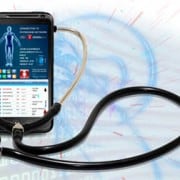Digital health predictions for 2022
It’s no doubt that the COVID-19 pandemic sent every industry on emergency mode and required everyone to make changes whether they liked it or not. In the healthcare industry, the new era of digital health began and has redefined patient care. Pediatric otolaryngologist Dr. Eric Gantwerker shares an article on MedCity News about the focus on digital health for the coming years based on these bold predictions for 2022.
The enhancement of biometric data collection and what that means for the patient and physician
It has become increasingly simple to monitor a patient’s health in the comfort of their home.Home-based wearable and implantable biosensors have become more prevalent and more accessible to consumers. Demand for this technology will only increase as at-home or on-the-go physician monitoring continues to grow, fueling adoption by healthcare practitioners.”
Digital health will alter HIPAA compliance
“As consumers continue to monitor their health at home, there will surely be an increase in patient data. This is extremely beneficial to help manage and understand the health of a patient outside of the doctor’s office. Patients no longer need to visit a clinical setting to obtain this data. However, as patients continue to measure their health via devices, patient data can be compromised given currently limited privacy protection for consumer-level data.”
Healthcare will continue to evolve, and so will the Food and Drug Administration (FDA)
“The world of digital health is expanding rapidly, and the healthcare industry has a lot of catching up to do. With the help of AI technology and recent surges in data from consumer-based medical devices, patients’ health information will be at risk until HIPAA updates its compliances.”
The increased importance of offering telehealth services
“Telehealth is no longer considered a luxury, but an integral part of a health systems’ care strategy. Remote healthcare is here to stay, and healthcare institutions should invest in the proper technology to remain relevant in an ever-evolving virtual care world—this includes ensuring that patients have the same-quality visits in a virtual setting as they would in the doctor’s office.”



